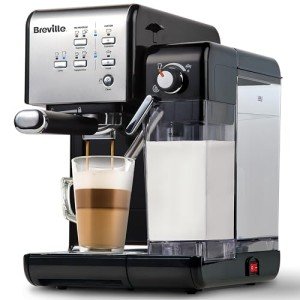The Art of Italian Espresso Machines: A Brewed Tradition
Italian espresso machines are not just home appliances; they are an important part of Italy's rich coffee culture, representing a blend of artistry, engineering, and design. Coffee enthusiasts around the globe acknowledge the importance of high-quality espresso, a staple of Italian life and food. This short article checks out the history, mechanics, types, and factors to consider when purchasing an Italian espresso machine, showing the depth of this precious beverage and its developing techniques.
History of Espresso Machines
The espresso machine's development go back to the early 20th century in Italy, where coffee was not simply a beverage however a vital social ritual. The preliminary efforts to brew espresso begun with simple, stove-top designs, slowly developing into complicated machines that might replicate the ideal brew.
- 1901-- The First Espresso Machine: The very first steam-powered espresso machine, called the "Ideale," was developed by Luigi Bezzera. This equipment marked a turning point in espresso developing.
- 1938-- The Lever Machine: The introduction of the lever machine made it easier to control the pressure utilized in espresso extraction, boosting taste consistency.
- 1947-- The Automatic Machine: Reaching more consumers, Gaggia launched the first automatic espresso machine, more promoting espresso bars.
- 2007-- The Digital Age: Technological improvements led to the birth of totally programmable machines, enabling users to tailor their brewing settings to accomplish a personalized coffee experience.
Key Features of Italian Espresso Machines
Italian espresso machines embody precision, workmanship, and innovation. Here are some essential components that highlight their significance:
| Feature | Description |
|---|---|
| Boiler Type | Determines how heat is generated and maintained. Coffeee include single boiler, dual boiler, and heat exchanger. |
| Group Heads | Where the coffee is brewed; commercial machines frequently have numerous group heads for effectiveness. |
| Pressure Control | Important for attaining the perfect espresso; most machines run at 9 bars of pressure. |
| Frothing Capabilities | The steam wand enables milk frothing, important for drinks like cappuccino and latte. |
| Build Quality | The products used (stainless steel, brass, etc) influence toughness and heat retention. |
Types of Italian Espresso Machines
Picking the best machine depends upon user preferences, budget, and intended use. Below are the primary kinds of Italian espresso machines:
Manual Espresso Machines
- Pros: Offer full control over the brewing process, permitting a tailored touch.
- Cons: Require ability and practice, can be labor-intensive.
Semi-Automatic Machines
- Pros: Provide a balance between automatic and manual processes; users manage water circulation.
- Cons: Can have a steeper knowing curve than completely automatic machines.
Completely Automatic Machines
- Pros: Simplify the brewing procedure with push-button operations; suitable for newbies.
- Cons: May sacrifice some of the nuances of manual developing.
Super-Automatic Machines
- Pros: Grind, tamp, brew, and froth automatically; practical for hectic way of lives.
- Cons: Less control over the developing variables, capacity for a less authentic espresso experience.
Buying Guide: Factors to Consider
Choosing the perfect Italian espresso machine can be challenging, however thinking about the following factors can simplify the decision-making procedure:
- Budget: Italian espresso machines range from affordable to high-end designs, so set a budget upfront.
- Use Frequency: Evaluate how often you will use the machine; day-to-day users might desire a more durable option.
- Area: Measure your cooking area or counter space; some machines can be large and require enough clearance.
- Maintenance: Consider ease of cleansing; machines with removable parts or integrated cleaning functions may decrease upkeep.
- User Skill Level: Beginners might choose completely or semi-automatic machines, while knowledgeable baristas can handle manual machines.
- Brand Reputation: Research brand names known for quality, such as Breville, Gaggia, and La Marzocco.
Popular Italian Espresso Machine Brands
Italian workmanship is renowned for producing a few of the very best espresso machines worldwide. Here are top brand names worth thinking about:
- Gaggia: Known for its home espresso machines and price.
- La Marzocco: A premium brand understood for its commercial-grade machines and ingenious innovation.
- Rancilio: Renowned for its long lasting develop and professional-quality machines suitable for home and commercial use.
- Sage/Breville: Offers advanced functions and easy to use designs, ideal for both beginners and enthusiasts.
FAQs
What is the difference between espresso and routine coffee?
Espresso is a concentrated coffee brewed by requiring hot water through finely-ground coffee under pressure. It has a thicker consistency, richer flavor, and greater caffeine concentration than regular coffee.
Can I make milk-based beverages with an espresso machine?
Yes, many Italian espresso machines feature a steam wand to froth milk for drinks like cappuccinos, lattes, and macchiatos.
How frequently should I clean my espresso machine?
Routine upkeep is necessary. Usually, a thorough cleansing is advised every couple of weeks, while descaling should be done every 1 to 3 months, depending upon water solidity.
What is the ideal pressure for developing espresso?
The ideal pressure for brewing espresso is around 9 bars. This pressure ensures the optimal extraction of flavors from the coffee premises.
Are more pricey machines worth the financial investment?
Higher-end machines often utilize better materials and innovation, offering enhanced durability and more consistent results. For serious coffee lovers, buying a good machine can elevate the espresso experience significantly.
Italian espresso machines are much more than mere brewing devices; they are a celebration of a cultural custom that has actually influenced coffee intake worldwide. With numerous designs readily available to fit any user's requirements-- ranging from newbies to seasoned baristas-- there is an Italian espresso machine perfectly matched for everyone. As you embark on your espresso journey, comprehending the history, mechanics, and choices will enhance your experience and appreciation for this time-honored beverage. Whether you seek to recreate a café ambiance at home or fine-tune your brewing method, these machines are capable of delivering unforgettable cups of espresso embellished with the abundant history of Italian coffee culture.

